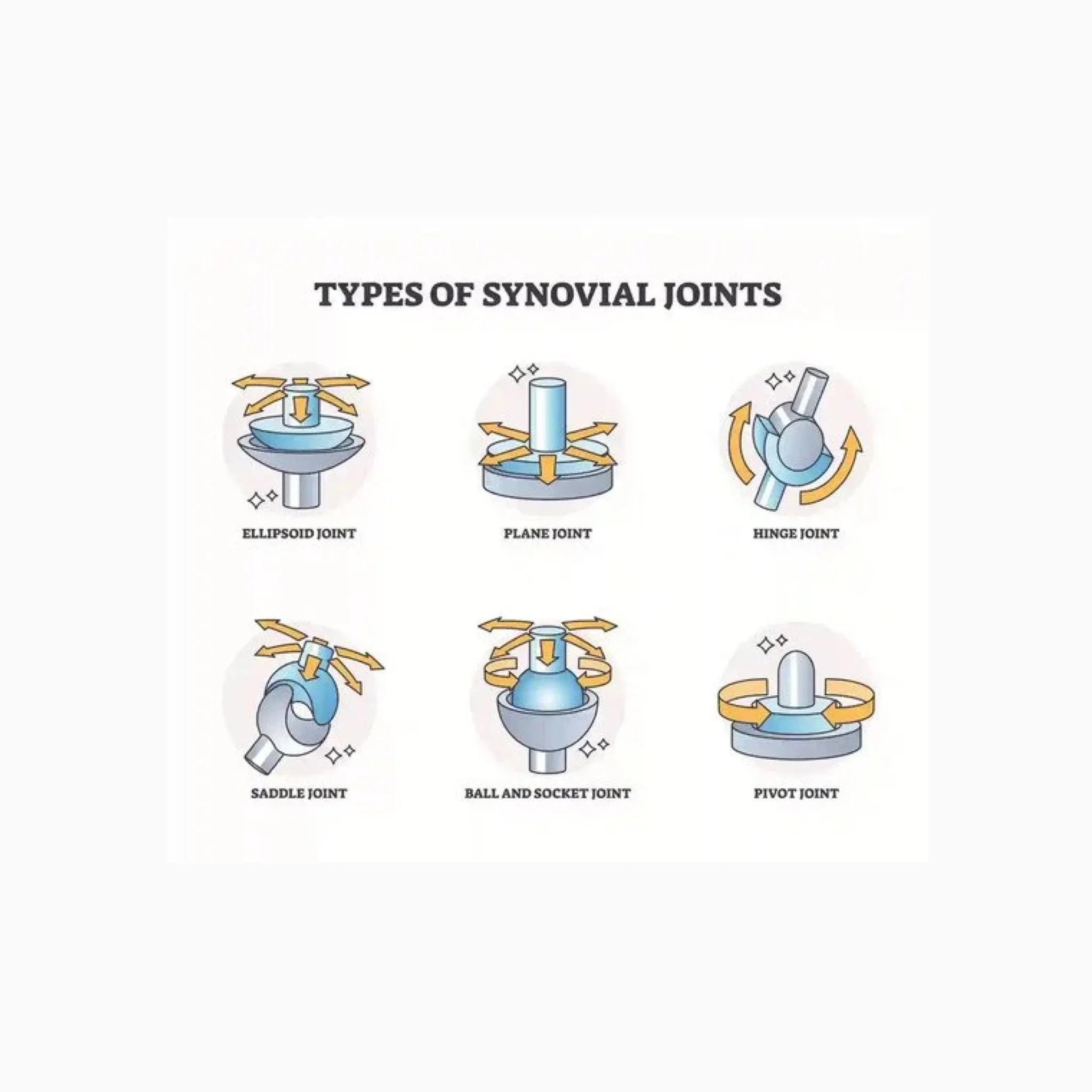The Ancient Technology of the Synovial Joint:
One of the most obvious displays of true technology are joints. In human engineering, a joint is a mechanical connection that allows controlled movement between parts, such as hinges in doors, ball-and-sockets in machinery, and pivots in tool. Every builder knows joints are essential: without them, machines cannot bend, rotate, or absorb stress. They are so common that we rarely notice them, yet they are at the heart of every mechanical system, from engines and robots to furniture and vehicles.
The striking fact is that the human body already contains all of these designs. Hinges, pivots, saddles, and ball-and-sockets are not inventions of modern engineering; they are ancient technologies built into us. And unlike their man-made counterparts, natural joints are far more advanced — lubricated, shock-absorbing, self-repairing, and designed to last for decades under constant use.
The Stomach: Overlooked System of Engineering
Take hydrochloric acid. Hydrochloric acid is strong enough to corrode metal. If you poured it on your hand, it would burn straight through tissue. Yet your stomach produces and contains this substance daily — without digesting itself. That’s not a trivial trick of nature. It’s a system with layers of timing, containment, and control. The stomach produces this highly corrosive substance in order to denature (break down) proteins, destroy pathogens, and activate the enzyme pepsin.

